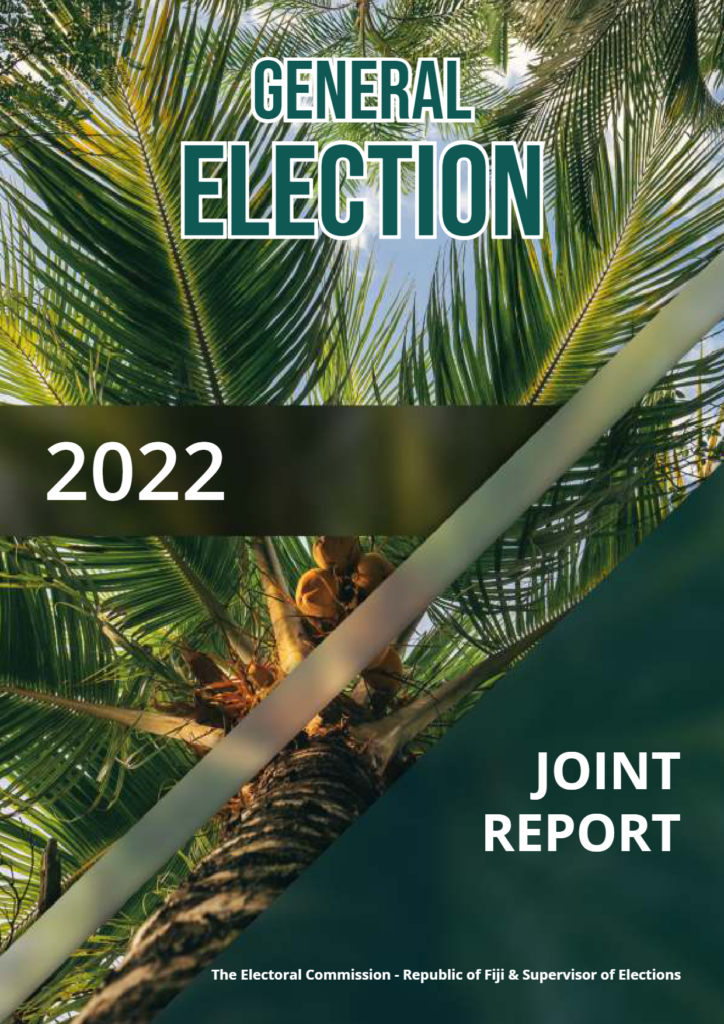15 September 2021
The total number of voters on the National Register of voters as at 30 June 2021 currently stands at 651,168. The FEO is currently preparing for the publication for the first Provisional Polling Station Voter Lists for the 2022 General Election which is due on 30 September 2021.
Section 40 of the Electoral Act was amended by Parliament in June this year and the law now requires the FEO to publish provisional voter list annually before 30 September of every year except in an election year.
In preparation for the 2022 General Election, the FEO will officially conduct 3 rounds of voter list verification directly with agencies on the ground such as the Turaga-ni-Koro, area advisory councillors, etc. At the same time, we plan to provide political parties with e-copies of the first provisional voter list at no fee to that they can also do their own verification exercise. The FEO will be collecting the responses from all verification sources and then reviewing it to organize the 2022 Nationwide Voter Registration Drive.
Voter registration is an ongoing exercise and the FEO carries out extensive data cleaning and verification exercises to ensure that the register is current, free from multiple registrations and verifiable.
We note in the media that there is some information published that reports the Fiji Bureau of Statistics [FBOS] has estimated that in the year 2019/2020, 570,327 were over the age of 18. While this figure from the FBOS is an estimate to begin with, it does not hold against actual direct registration platforms such the voter registration data or even the latest statistics on those that have been vaccinated in terms of the numbers published by Ministry of Health (As at 14 September, the Ministry of Health has reported that 573, 247 individuals have been vaccinated). The voter registration figures stood at 650,081 as at 31 December 2020.
The OSCE Office for Democratic Institutions and Human Rights (ODIHR), in the 2012 publication ‘Handbook for the Observation of Voter Registration’ succinctly explains the difference in methodologies for census as opposed to voter registration:
A number of differences between census and population registration should be noted:
Census:
- Enumerates all people found by interviewers during the days of the exercise, but potentially omits those absent from their place of residence;
- Is usually devoid of personal identification; and
- Is based on the current place of residence.
Population Registration:
- Is conducted over an extended time frame and does not register non-citizens residing in the country on a short-term basis;
- Collects accurate personal information, ideally about all citizens of a country and under strict data protection rules; and
- Operates with rigorous terms, such as the registered (permanent or temporary) address and/or residence, as formally defined in the country’s legislation.
Census data can help election observers create an approximate demographic image of the State. It is possible, by statistical calculations based on census data, to produce an estimate for the proportion of eligible citizens among the population for any administrative unit and compare it with the official number of registered voters. This information may be useful for election observers. However, such comparisons should be treated cautiously due to the different natures of the exercises and methodologies applied for a census and for population registration.
The Multinational Observer Group in the 2018 General Election explained the variances between census data with voter registration data as follows:
“The MOG observed that the Register published in October 2018 became controversial when it appeared to contradict the results of Fiji’s 2017 census. The Register reported a population of voters higher than the equivalent number of voting-age people reported in the census. The MOG spoke to a range of Fijian agencies, including the FEO and the Bureau of Statistics, as well as academic and professional statisticians, about the two data sets and concluded the discrepancy was the result of different methodologies. The FEO collected its data continuously over four years and the census comprised data collected on a single day (and collected with a range of questions designed for multiple purposes).
The Multinational Observer Group found that
“The MOG assesses that for the purpose of maintaining the voter register the FEO methodology was robust, as a result of the continuous updating and biometric technology.”
The FEO appreciates that there are robust discussions on the Voter Roll and also welcomes arguments on the veracity of the register. The FEO also recognizes that various stakeholders have vested interest in the Roll. However, the utmost priority of the FEO is to ensure that it upholds the principles in section 53 of the Constitution – one person, one vote, one value. However, we note some individuals are being overly dramatic about it instead of verifying with the FEO before making wild, rather malicious allegations.
-Ends-


